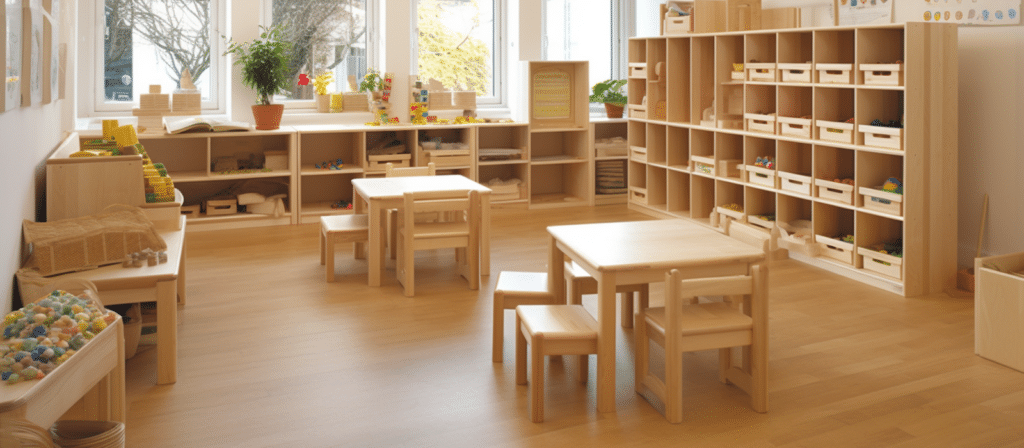Envision a space where sunlight streams in through wide windows, casting gentle shadows that dance across floors and walls. A diverse array of furniture, each with unique shapes and sizes, offers an enticing world for exploration—climbing over, around, and inside. This room is designed for pure comfort, offering spots to lounge and cuddle. It’s a sanctuary where the joy of discovery occasionally results in delightful messes, sensory substances playfully finding their way onto young explorers. Here, diversity is embraced—every corner exudes distinct looks, textures, sounds, and scents. Lilacs grace the room, while baskets of ivy hang near the window. The door beckons to the outside, a realm of sunlit grass and gentle shade, inviting unrestrained playfulness, the freedom to bounce and waddle with unbridled enthusiasm.
Bid farewell to the notion of a crib-dominated space or the harsh glare of fluorescent lights illuminating sterile tiles. Say goodbye to confined cells where time is rigidly segmented between a crowded rug, a bounce chair, and a crib. Instead, envision a realm where tables and chairs coexist harmoniously, purposefully chosen toys are scattered about, and activities are not just time-fillers for a busy group.
This isn’t just a space—it’s a dynamic interplay of adults and little ones, their interactions genuine, warm, and frequent. Real conversations flow between caregivers and children, where grown-ups lend their ears to listen and respond to the babble of the young.
Zoom in, and you’ll discover a world teeming with individuals. There’s Stephen, striding in like a miniature Sun King, radiating an aura of love and seeking it in return. Then there’s Alexander, a perpetual worrier who finds solace in a comforting embrace. Alicia is the curious sampler, while JoAnna requires her morning siestas.
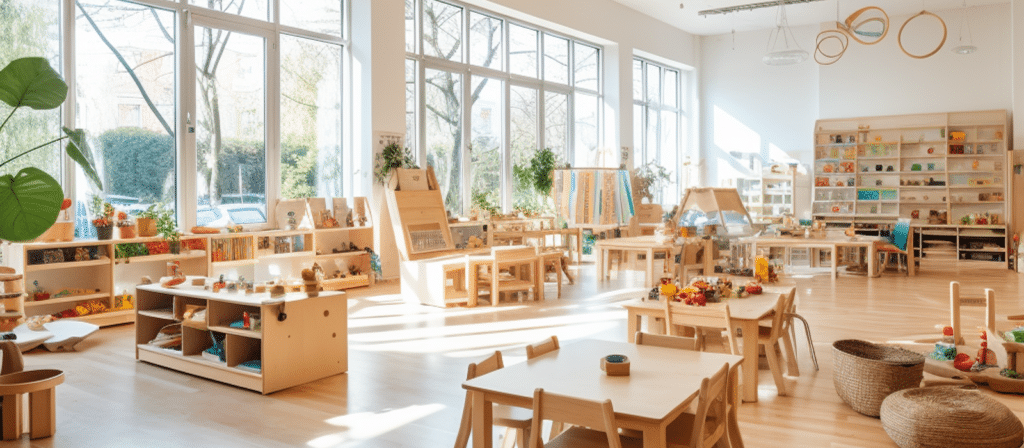
Children here are on a quest to assert their independence—infants clutching spoons and cups, toddlers mastering the art of pouring and grappling with zippers.
Parents aren’t just welcome, they’re essential inhabitants of this realm. Their presence is felt through photographs and information tailored to their eyes. The warmth with which they are embraced and their familiarity with every facet of this environment leave no doubt that this is their space too.
A sense of security pervades—a safety net that extends beyond scraped knees and minor bruises, encompassing the assurance that every child is genuinely seen, understood, and embraced for who they are.
Engagement permeates the air: when adults engage with children, they’re fully present. As children explore the world and their budding capabilities, their focus is unwavering.
Active learning takes center stage: children are utterly engrossed, immersed in activities that encompass all their senses and engage their entire bodies.
Yet, regrettably, such programs are elusive. Less than a tenth of early childhood centers truly excel in their provision for babies. Quality, it seems, is no easily attainable feat.
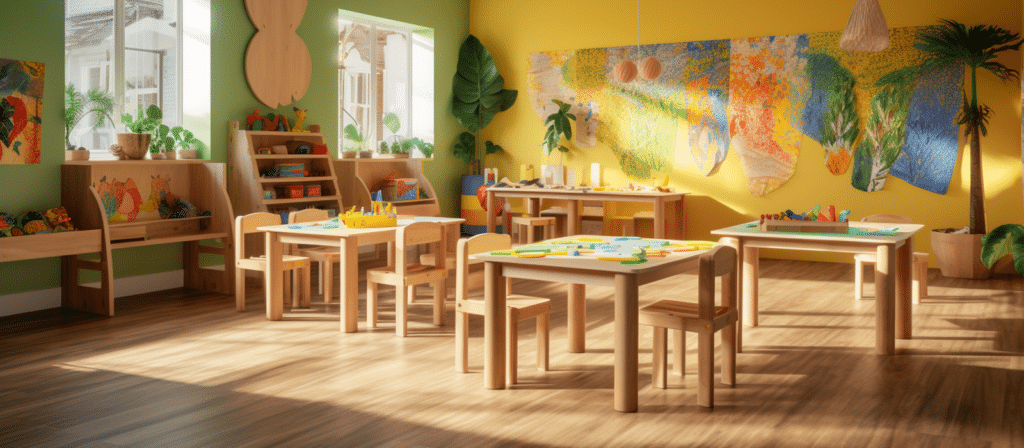
Quality infant care transcends fancy curricula or an array of stimulants. It’s not about polished tiles, appealing lofts, or an environment free of bumps. It’s not even solely about maintaining low ratios and employing cheerful, affectionate staff. Quality revolves around delivering warm, personalized care to each child, tailored to their sensory, motor, and language development. It’s about empowering parents with a sense of control.
Crafting Quality: A Symphony of Elements
Quality doesn’t manifest without proper ratios—a maximum of one adult to four children for infants, and one adult to five children for toddlers. However, it’s not solely about numbers; it hinges on caregivers who cherish each child for their present selves, appreciating their current abilities.
Quality emerges through meticulous design and planning of the environment—time and space harmonize to foster care and learning. Every facet is curated to make the most of caregivers’ time, a result of thorough thought, resource optimization, and adaptability to individual needs.
Infusing Learning into Every Nook
An integral feature of superior infant and toddler programs is the transition from traditional structured activities to an environment that inherently promotes learning. This approach liberates caregivers to fully engage with children—to gently change a diaper, guide a child through separation, or revel in newfound discoveries. These are precious moments, irreplaceable interactions. Prioritizing these over hurried teaching is the key.
While teacher-initiated activities play a role, the environment itself is a canvas for unscripted exploration. Activities unfold individually or in small groups, set amidst a backdrop of rich sensory and motor exploration.
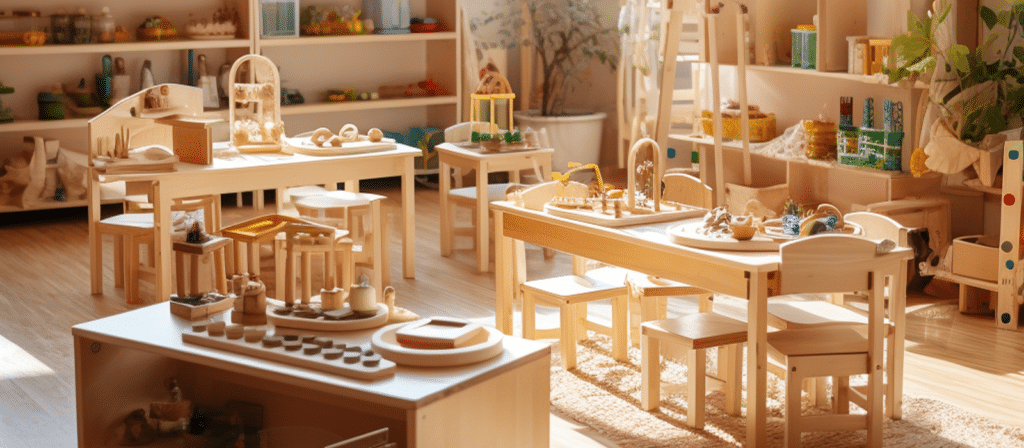
A Haven of Organization and Convenience
Efficiency and organization grant caregivers the gift of time to connect with children. Adequate storage and well-placed equipment facilitate this.
Designing the Ideal Space for Infants
A space that cherishes infants boasts adherence to National Health and Safety Performance Standards. But, two crucial principles underpin this:
- Embracing Learning through Play: Acknowledging that learning carries inherent risks, including minor bumps and bruises—a natural byproduct of exploration.
- Balancing Sanitation with Sensory Growth: A quality program prioritizes minimizing the spread of illness without stifling sensory exploration and active learning.
A Sanctuary for Existence
A remarkable space for infants and their caregivers comprises:
- Ample Room: Space for adults and children, bathed in natural light.
- Connecting with Nature: Windows and doors that link to the outside world.
- Appropriate Lighting: Warm, home-like illumination that caters to various moods.
- Varied Spaces: Diverse spots offering distinct sensory experiences.
- Quiet Retreats: Places for reflection amidst the hustle.
- Comfortable Nooks: Soft seating—sofas, cushions, futons.
- Zoning: Separate sleeping areas that respect individual schedules.
- Nature’s Touch: Plants and textured decor, enhancing the sensory palette.
- Outdoor Oasis: A play area combining shade, sun, grass, and tactile elements.
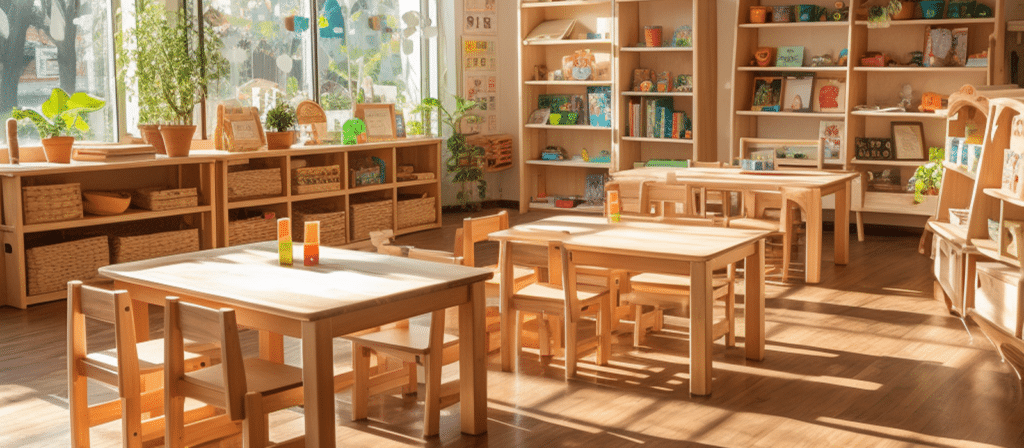
A Nexus of Learning
The initial years are dominated by sensory, motor, language, and self-awareness development. An ideal learning space should brim with:
- Motor Mastery: Opportunities for climbing, pushing, and grasping.
- Sensory Delights: A tactile world for touching, tasting, smelling, seeing, and hearing.
- Language Richness: Conversations, attentive listening, and shared reading.
- Self-Expression: Motion-infused art, problem-solving, and autonomy.
- Exploration Aids: Assortments of loose parts for inspection, collection, and manipulation.
An Empowering Workplace
An exceptional work environment boasts:
- Essentials: Accessible water and restrooms.
- Practical Storage: Nearby, well-organized storage.
- Information Access: Clear organization and informative signs.
- Supplies at Hand: Ready availability of cleaning materials.
A Retreat for Parents
Parents are ushered in warmly, their understanding of the space facilitated. Storage provisions cater to their needs.
In Closing: Nurturing Infants in Reality
Infants merit more than they often receive in group care settings. Many programs are inadvertently inadequate—rigid, overstimulating, or insufficiently responsive to children’s distress. However, this isn’t due to negligence; it’s a result of the challenges of curating spaces with limited resources

